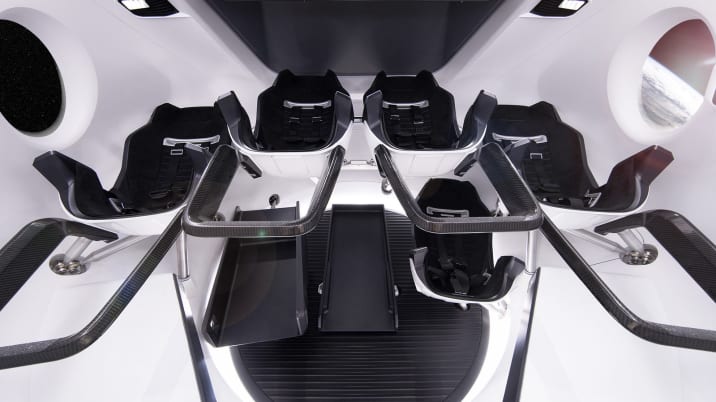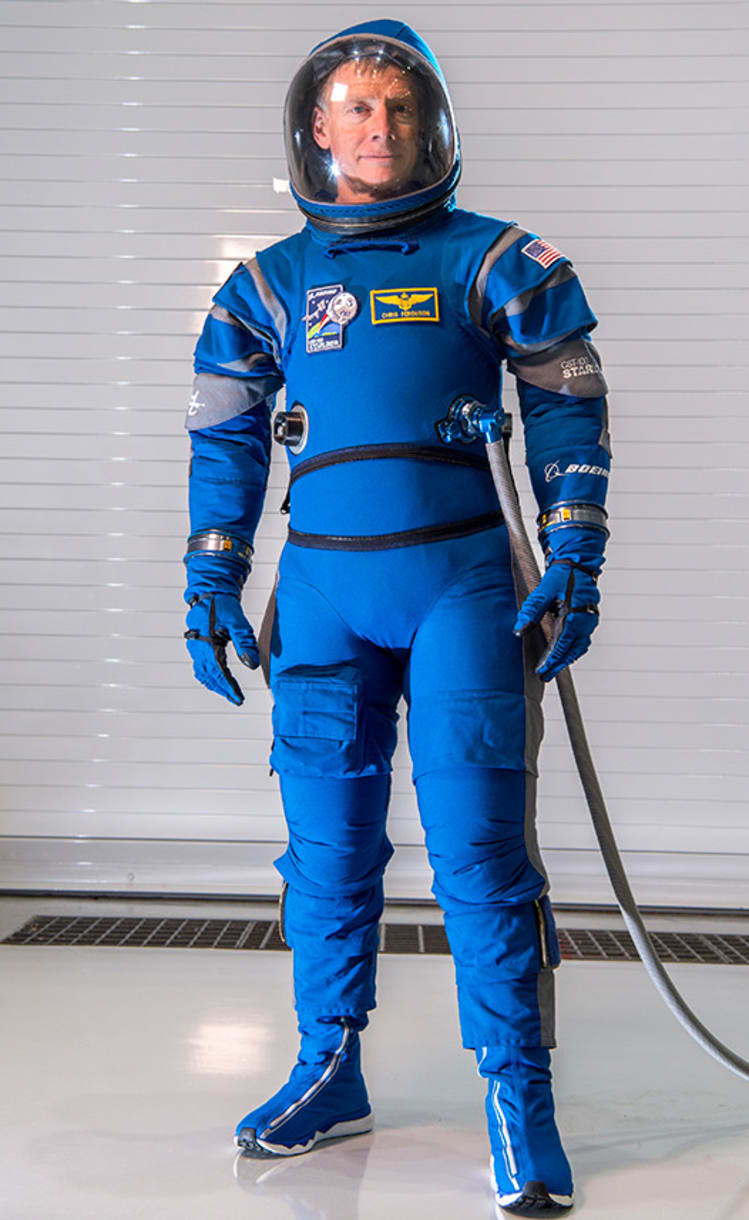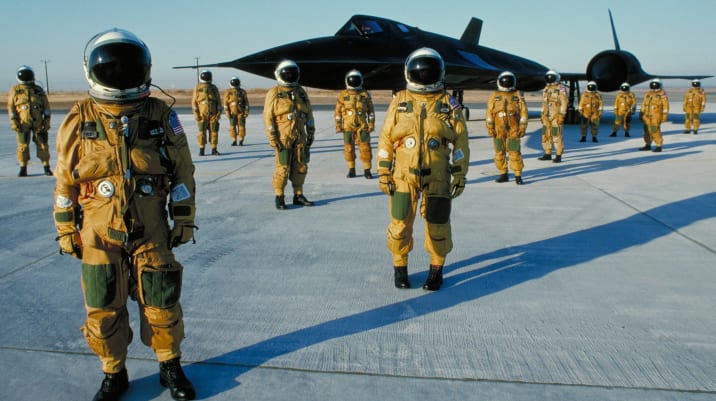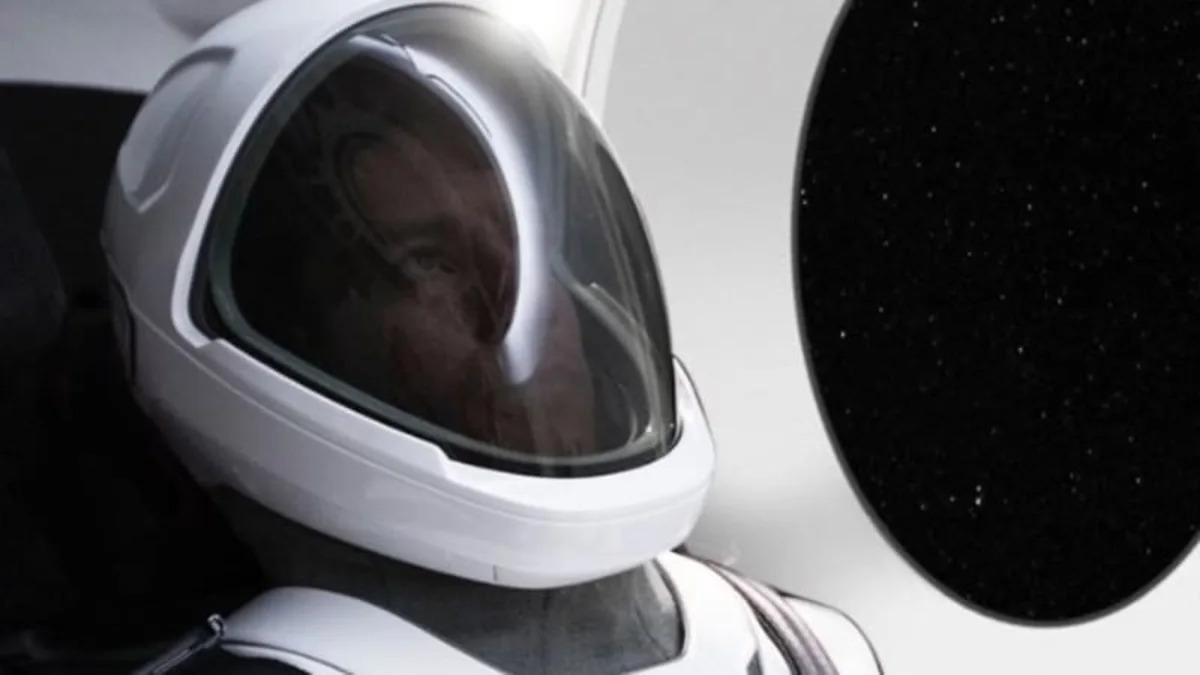Tesla and SpaceX CEO Elon Musk on Wednesday teased an image of his space company's new spacesuit design, and it's tres chic. If you zoom in and look closely at the picture, though, doesn't that look like ol' Elon himself behind that visor?
SpaceX needs spacesuits, as you may know, because it is racing to develop its Crew Dragon capsule, a version of the unmanned Dragon capsule the company has used to deliver supplies to the International Space Station. And just like a Tesla, the Crew Dragon mockup that Musk showed off in 2015 is sleek, minimalist and futuristic-looking, so of course the suit had to match:

This, by the way, is the getup Boeing has planned for occupants of its competing Starliner capsule. It features kicks by Reebok:

The term "spacesuit" gets used loosely. For instance, few days ago, it was used wrong on news outlets as credible as NPR when some college students found discarded NASA clothing in a thrift shop. What they found were not spacesuits in any sense, but simply flight jumpsuits, not unlike what an auto mechanic might wear.
What Musk is showing off is a pressurized flight suit, intended to keep the wearer alive in case of cabin decompression. There's nothing new about a pressure suit — the David Clark Co., maker of America's spacesuits for decades, first fielded a partial-pressure suit in 1946 for use by X1 rocket-plane test pilots such as Chuck Yeager.
Seventy years later, David Clark's website even offers off-the-rack pressure suits that Elon Musk simply could have ordered, had he not been keen on using a bespoke tailor. David Clark also supplies the analog of Musk's pressure suit, the Model S1035 Advanced Crew Escape Suit used during NASA's shuttle program, which may well be used for manned flights of NASA's upcoming Orion capsule. Is it as sleek, stylish and spiffy as the SpaceX suit? No. Is it flight-tested? Many times. If you're in the market for a spacesuit, the David Clark website makes for fun online shopping.
Musk talks about the difficulty of combining style with functionality, but check out the pressure suits worn by the Mercury Seven during Alan Shepard's 1961 suborbital flight and the subsequent Mercury orbital missions. In our book, it's hard to improve on a classic look. These guys were dressed like they were ready to meet the future:

And we came across this shot of SR-71 Blackbird pilots in the 1980s. Musk might deem these crude and bulky, but when you're flying the world's fastest airplane, whatever you wear is by definition bad-ass:

Getting back to Elon Musk, he's showing off a suit that can be worn into space — as long as you remain within the confines of the capsule. By the Gemini program, NASA needed a proper spacesuit that could itself function as a spacecraft for astronauts working outside on extravehicular activities, aka spacewalks. Those suits had to protect the wearer from a range of threats, from micrometeorites to radiation to temperatures that shift from 100 degrees Centigrade in direct sunlight to -100 C on the night side of orbit. And yet the suits had to be flexible enough to perform work.
When Ed White became the first American to perform a spacewalk on Gemini 4 in 1965 (shown below), he was wearing a David Clark Co. suit with 10 layers of protection, with the key layer being an inflatable rubber pressure bladder assembled by ladies with glue pots at the David Clark factory. Gemini 10 spacewalker and Apollo 11 command module pilot Michael Collins was the astronaut most involved in developing suits for Gemini and Apollo. In his excellent memoir, "Carrying the Fire," he describes the intricate process of building the custom-tailored suits. Each astronaut was fitted for three spacesuits apiece: for training, for flight, and a backup.
The suit was inflated rather than rigid, which complicated wriggling in and out of the Gemini capsule, cramped as a Volkswagen Beetle. In Gemini, the spacewalker flew into space wearing a more elaborate suit than the commander who stayed in the capsule, and Collins says the crew subsequently disagreed over cabin temperatures during the flight, with the man in the right-hand seat invariably being too hot.
There was even said to be a worst-case-scenario protocol in which the Gemini pilot would have to cut the spacewalker loose if he could not be refitted back into the capsule. Getting back in was a maneuver described as putting a champagne cork back in the bottle. Eugene Cernan, who later was the last man to walk on the moon on Apollo 17, had a difficult time getting back into the capsule during his near-disastrous Gemini 9 spacewalk in 1966.
NASA kept learning through the years, replacing the air cooling of the Gemini EVA suit with long johns that utilized liquid cooling, worn beneath the suits used during the moon landings. Those suits were rugged in the extreme, protecting astronauts from falls on the rugged lunar surface, and they featured a full self-contained life-support system in bulky backpacks.
By the era of the space shuttles and International Space Station, EVA suits were not tailored for each astronaut as during Apollo, but were modular with interchangeable parts. The liquid cooling technology was still in use, which almost had a disastrous consequence in 2013 when a leak caused the helmet of Italian astronaut Luca Parmitano to flood with 1.5 liters of water during a spacewalk. He nearly drowned before he made his way back into the airlock.
Elon Musk is going for a "balance of esthetics and function." NASA's suits, not to mention those of the Russian Space Agency, are all about function. Some of the suits used today on the International Space Station, or at least pieces of them, have been used by a long line of spacefarers over 35 years, and smell like a locker room. That may not be fashionable, but they get the job done.
Space isn't glamorous. It's a place where hard work gets done. Elon Musk wants to be the disruptor for the auto industry, the transportation industry, the space industry, and much of what his enterprises have done is incredibly impressive, including relanding a rocket booster. So we're sure his spacesuit is somehow revolutionary. But that pretty white thing will be a lot more impressive once it gets dirtied up a little.
Related Video:


Sign in to post
Please sign in to leave a comment.
Continue